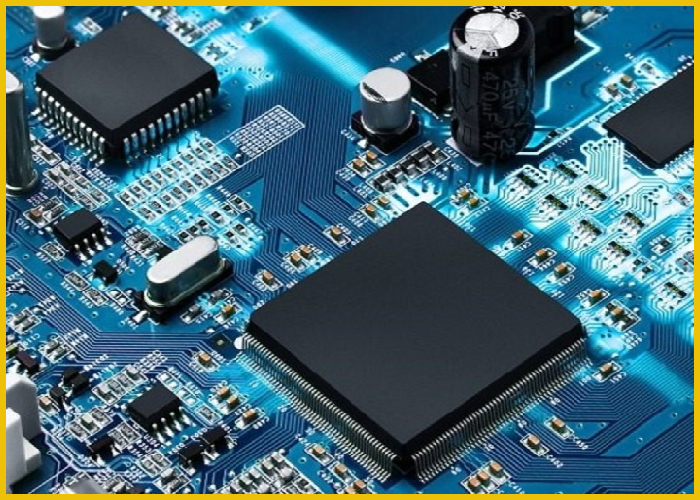How Computers Communicate?

In the vast and intricate network of modern technology, the process of communication between computers stands as the cornerstone of nearly every digital interaction we experience. Whether we’re sending an email, browsing the web, or streaming a movie, the seamless exchange of information between computers enables the interconnected world we inhabit. But how do computers communicate, and what mechanisms enable this digital dialogue to occur? In this exploration, we’ll unravel the mysteries of computer communication, delving into the protocols, standards, and technologies that underpin the digital conversations happening all around us.
The Language of Bits and Bytes
At the very heart of computer communication lies the binary code—a language composed solely of two symbols: 0 and 1. These binary digits, known as bits, serve as the foundational elements of all digital data, representing the presence or absence of electrical signals within a computer’s circuits. By arranging these bits in specific patterns, computers can encode and transmit information in various forms, including text, images, audio, and video. Thus, the entire spectrum of digital communication is built upon the simple yet powerful language of bits and bytes.
Networking: Connecting Computers Across the Globe
The backbone of computer communication is the vast network known as the internet—a sprawling web of interconnected devices spanning the globe. This global infrastructure facilitates the exchange of data between computers, regardless of their geographic location. At the heart of the internet lie complex networking protocols such as the Transmission Control Protocol (TCP) and Internet Protocol (IP), which govern the routing, addressing, and delivery of data packets across the network. These protocols ensure that data can traverse vast distances, navigating through a labyrinth of interconnected devices to reach its destination.
Data Transmission: From Bits to Bytes
When computers communicate over a network, data is transmitted in the form of discrete packets—small chunks of information that travel from the sender to the receiver along a series of interconnected pathways. Each packet contains not only the raw data being transmitted but also metadata such as source and destination addresses, error-checking information, and sequencing details. By breaking data into packets, computers can efficiently transmit information across vast distances while ensuring reliability and integrity. This packet-switching approach allows for efficient use of network resources and enables data to be transmitted in parallel, optimizing speed and throughput.
Protocols and Standards: The Rules of the Road
To facilitate seamless communication between computers, a myriad of protocols and standards govern the exchange of data across the internet. These protocols define the rules and procedures for transmitting and receiving data, ensuring interoperability and compatibility between different systems and devices. Some of the most commonly used protocols include HTTP (Hypertext Transfer Protocol), SMTP (Simple Mail Transfer Protocol), FTP (File Transfer Protocol), and TCP/IP (Transmission Control Protocol/Internet Protocol). Each protocol serves a specific purpose, whether it’s transferring web pages, sending email messages, or uploading files to a server. Together, these protocols form the foundation of modern computer communication, enabling the vast array of digital services and applications that we rely on every day.
Encryption and Security: Safeguarding Digital Conversations
Encryption plays a crucial role in securing digital communications. Encryption algorithms such as RSA, AES, and SSL/TLS scramble data before transmission, making it unreadable to anyone without the proper decryption key. By encrypting sensitive information, such as passwords, financial transactions, and personal messages, computers can ensure the confidentiality and integrity of digital conversations. Encryption is essential for protecting data privacy and preventing unauthorized access, particularly when transmitting sensitive information over public networks such as the internet. Without encryption, data would be vulnerable to interception and eavesdropping, exposing users to potential security risks and breaches of privacy.
The Future of Computer Communication: Innovations on the Horizon
As technology continues to evolve at a rapid pace, the future of computer communication holds boundless promise. Emerging technologies such as 5G networks, quantum computing, and the Internet of Things (IoT) are poised to revolutionize the way computers interact and communicate with one another. 5G networks promise ultra-fast wireless connections, enabling real-time communication and collaboration on a global scale. Quantum computing offers unprecedented processing power, allowing computers to solve complex problems and process vast amounts of data with unparalleled speed and efficiency. The Internet of Things (IoT) connects billions of devices, from smart appliances and wearable devices to industrial sensors and autonomous vehicles, creating a vast network of interconnected devices that can communicate and collaborate in real-time. These technologies are driving a new era of innovation and discovery, unlocking new possibilities for communication, collaboration, and connectivity.
The Endless Dialogue of the Digital Age
The conversation never ends. From the humble exchange of text messages to the transmission of vast amounts of data across the globe, computers continue to connect, collaborate, and communicate in ways that shape our world in profound ways. By understanding the mechanisms and technologies that underpin this digital dialogue, we gain insight into the inner workings of the interconnected world we inhabit—and the limitless potential for innovation and discovery that lies ahead. So let us continue to explore, to innovate, and to embrace the transformative power of computer communication to build a brighter, more connected future for all.



Post Comment